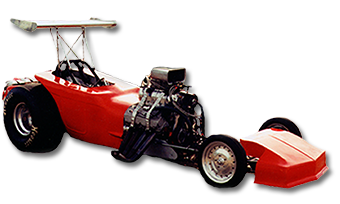Some new highway engines sport a dramatic change to camshaft timing for improved efficiency, emissions, and performance. Each of these apply to high compression ratio engines. However, they rely on special camshaft timing to reduce the compression ratio to retard pre-ignition. An increased expansion ratio from a higher compression ratio remains that achieves improved engine performance & power. Each of these have application to racing engines that are common with mechanical fuel injection.
Miller Cycle
This method applies to a high compression ratio engine with a supercharger. The camshaft is designed with a late closing intake valve. That allows some of the intake to be pushed back into the intake manifold. This reduces compression ratio to avoid pre-ignition. It makes the same effective compression ratio as a smaller engine with a lower compression ratio. However, it is done with a larger engine with a high compression ratio. When the power stroke occurs, a higher compression ratio with a larger expansion ratio causes more efficiency & power.
Some fuels that are used in supercharged engines are detonation sensitive. Certain provisions are used to limit detonation. One is a reduction in static compression ratio. Another is to limit the amount of supercharger boost.
Nitromethane is a good example. In Nostalgia blown nitro drag racing, compression ratio is typically reduced to only 6 to 1. Class rules limit blower size, overdrive, and fuel pump size. Long intake duration camshafts are typical in this class. One of our customers previously used a short intake duration camshaft and experienced a lot of pre-ignition. This is sort of an example of tipping out of a partial Miller cycle domain. A later closing intake from a longer duration camshaft was subsequently used. It caused favorable reversion, less compression ratio, and less pre-ignition. It was making the engine essentially a smaller size in the intake stroke with a reduced effective compression ratio, reducing pre-ignition. Yet, the engine remained the full size and expansion ratio for maximum power. Camshafts in the 290 degrees duration @ 0.050 inches lift are typical of the long duration camshafts in this class.
Through the years, I saw at least 3 different motorsports applications with camshaft intake duration over 300 deg. which is quite high. Although they were not concisely Miller cycle engines, these suggest an examination of longer camshaft duration with a later closing intake such as these. Combine that with a larger engine and higher compression ratio. Favorable results in Nostalgia blown nitro drag racing could be expected. Intake reversion from the Miller cycle also increases fuel turbulence and dwell time, increasing vaporization for more power.
If added camshaft intake duration provides decreased pre-ignition, additional spark advance or nitro percentage may also work for more power. Our added oxygen to fuel ratio determination in our ProCalc jetting calculator provides precise numerical control of the tuning for this setup change for differences in nitro percentage, blower overdrive, and weather.
Gasoline with a blower is another great application for the Miller cycle. We have fuel injection setup info in our publications with our ProCalc calculator to assist with this combination.
Next is a summary of two other methods of dramatic camshaft timing change for more efficiency & power.
Atkinson Cycle
- Normally aspirated engine with a late closing intake valve with high compression ratio
- same effective compression ratio as a smaller engine with lower compression
- for reducing pre-ignition
- larger expansion ratio from a higher CR for more efficiency & power.
Budak Cycle
- Normally aspirated engine with an early closing intake valve with high compression ratio
- same effective compression ratio as a smaller engine with lower compression
- for reducing pre-ignition
- larger expansion ratio from a higher CR for more efficiency & power.
Further evaluation of these two alternatives for racing applications will be provided in our
subsequent publications.
